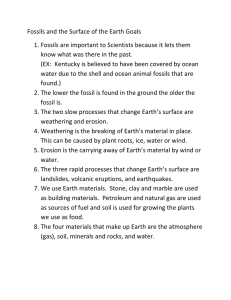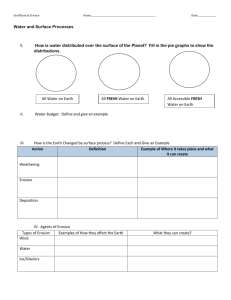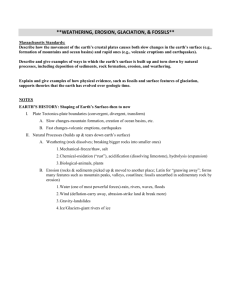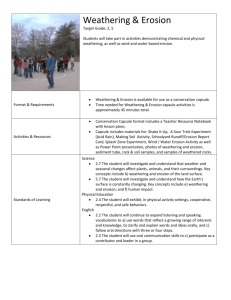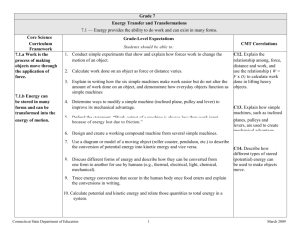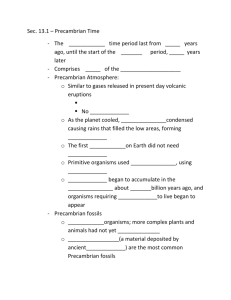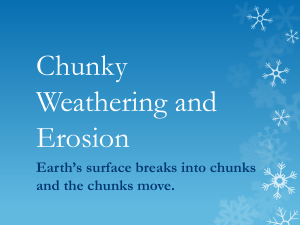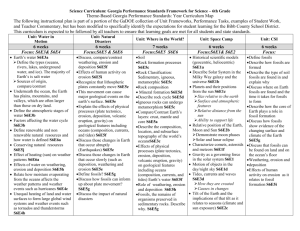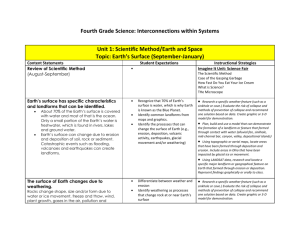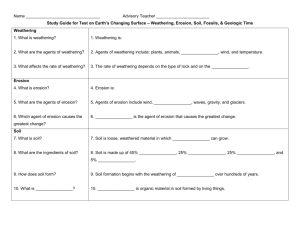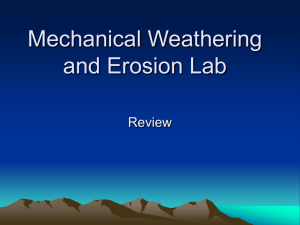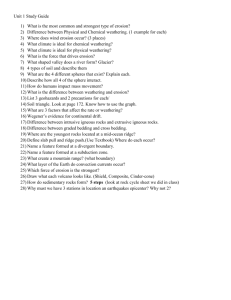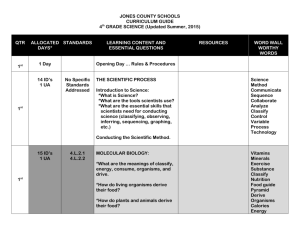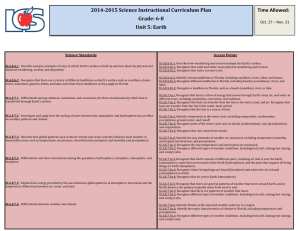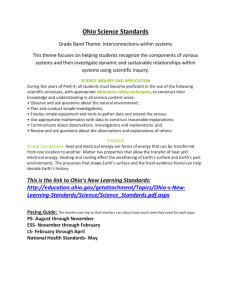1st Nine Weeks “I Can” Statements with related Core Content Ch. 6
advertisement
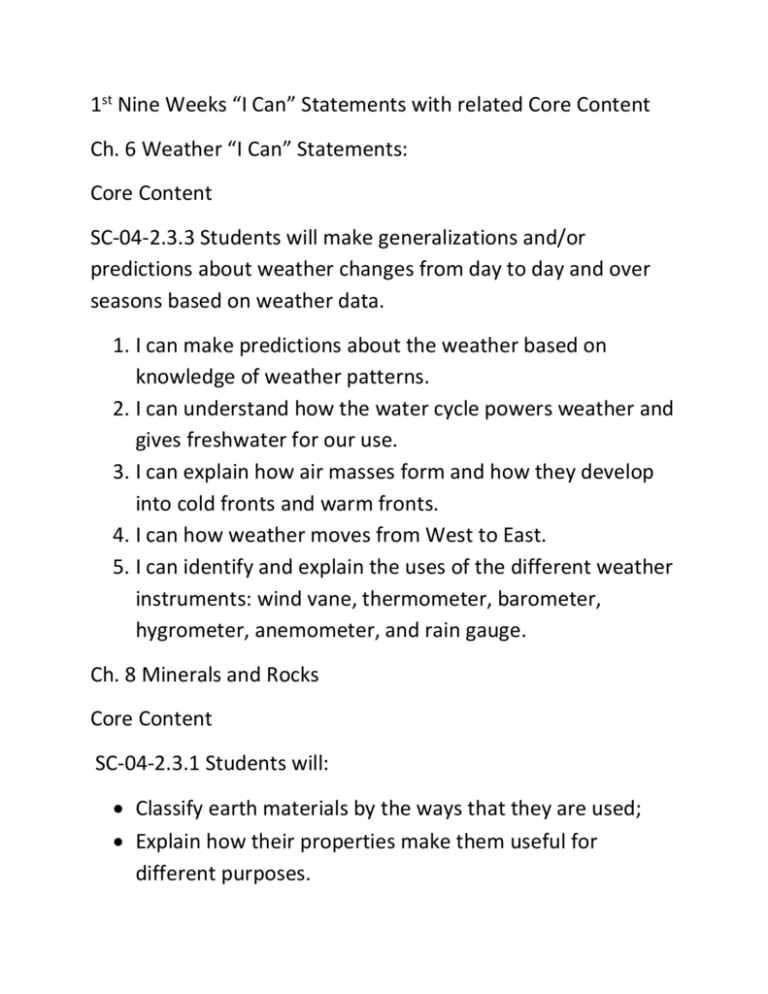
1st Nine Weeks “I Can” Statements with related Core Content Ch. 6 Weather “I Can” Statements: Core Content SC-04-2.3.3 Students will make generalizations and/or predictions about weather changes from day to day and over seasons based on weather data. 1. I can make predictions about the weather based on knowledge of weather patterns. 2. I can understand how the water cycle powers weather and gives freshwater for our use. 3. I can explain how air masses form and how they develop into cold fronts and warm fronts. 4. I can how weather moves from West to East. 5. I can identify and explain the uses of the different weather instruments: wind vane, thermometer, barometer, hygrometer, anemometer, and rain gauge. Ch. 8 Minerals and Rocks Core Content SC-04-2.3.1 Students will: Classify earth materials by the ways that they are used; Explain how their properties make them useful for different purposes. Earth materials provide many of the resources humans use. The varied materials have different physical properties that can be used to describe, separate, sort and classify them. Inferences about the unique properties of the earth materials yield ideas about their usefulness. For example, some are useful as building materials (e.g., stone, clay, marble), some as sources of fuel (e.g., petroleum, natural gas), or some for growing the plant we use as food. SC-04-2.3.2 Students will describe and explain the consequences of changes to the surface of the Earth, including some common fast changes (e.g., landslides, volcanic eruptions, earthquakes), and some common slow changes (e.g., erosion, weathering). The surface of the Earth changes. Some changes are due to slow processes such as erosion and weathering. Some changes are due to rapid processes such as landslides, volcanic eruptions and earthquakes. Analyzing the changes to identify cause and affect relationships helps to define and understand the consequences. SC-04-3.5.1 Students will use representations of fossils to: Draw conclusions about the nature of the organisms and the basic environments that existed at the time; Make inferences about the relationships to organisms that are alive today. Fossils found in Earth materials provide evidence about organisms that lived long ago and the nature of the environment at that time. Representations of fossils provide the basis for describing and drawing conclusions about the organisms and basic environment represented by them. 1. I can explain how to classify rocks and minerals based on their properties. (2.3.1) 2. I can explain how earth’s materials properties make them useful for use by people. (2.3.1) 3. I can explain the process of erosion and weathering. (2.3.2) 4. I can explain how fossils can inform us about how living things lived long ago. (3.5.1) Ch. 9 Changes to Earth’s Surface Core Content SC-04-2.3.2 (Above) 1. I can describe the differences in landforms. (Not in CC for Science, but in S.S. maybe???) 2. I can explain the difference in chemical and physical weathering. (2.3.2) 3. I can explain the process of weathering and erosion. (2.3.2) 4. I can distinguish the difference in a fast physical change (e.g., earthquake, volcano, and landslide) and a slow physical change (e.g., erosion and weathering). Ch. 10 Using Natural Resources CC- SC-04-2.3.1 (Above) SC-04-4.7.2 Students will: Describe human interactions in the environment where they live; Classify the interactions as beneficial or harmful to the environment using data/evidence to support conclusions. All organisms, including humans, cause changes in the environment where they live. Some of these changes are detrimental to the organism or to other organisms; other changes are beneficial (e.g., dams benefit some aquatic organisms but are detrimental to others). By evaluation the consequences of change using cause and effect relationships, solutions to real life situations/dilemmas can be proposed. 1. I can explain how natural resources are used and why they are important to conserve. (2.3.1) 2. I can explain the difference in renewable and nonrenewable resources. (2.3.1) 3. I can describe the physical properties of the three different types of soil (clay, silt, sand). (2.3.1) 4. I can explain how humans affect our environment. (4.7.2) 5. I can explain the importance of recycling and conservation in relation to natural resources. (4.7.2)
